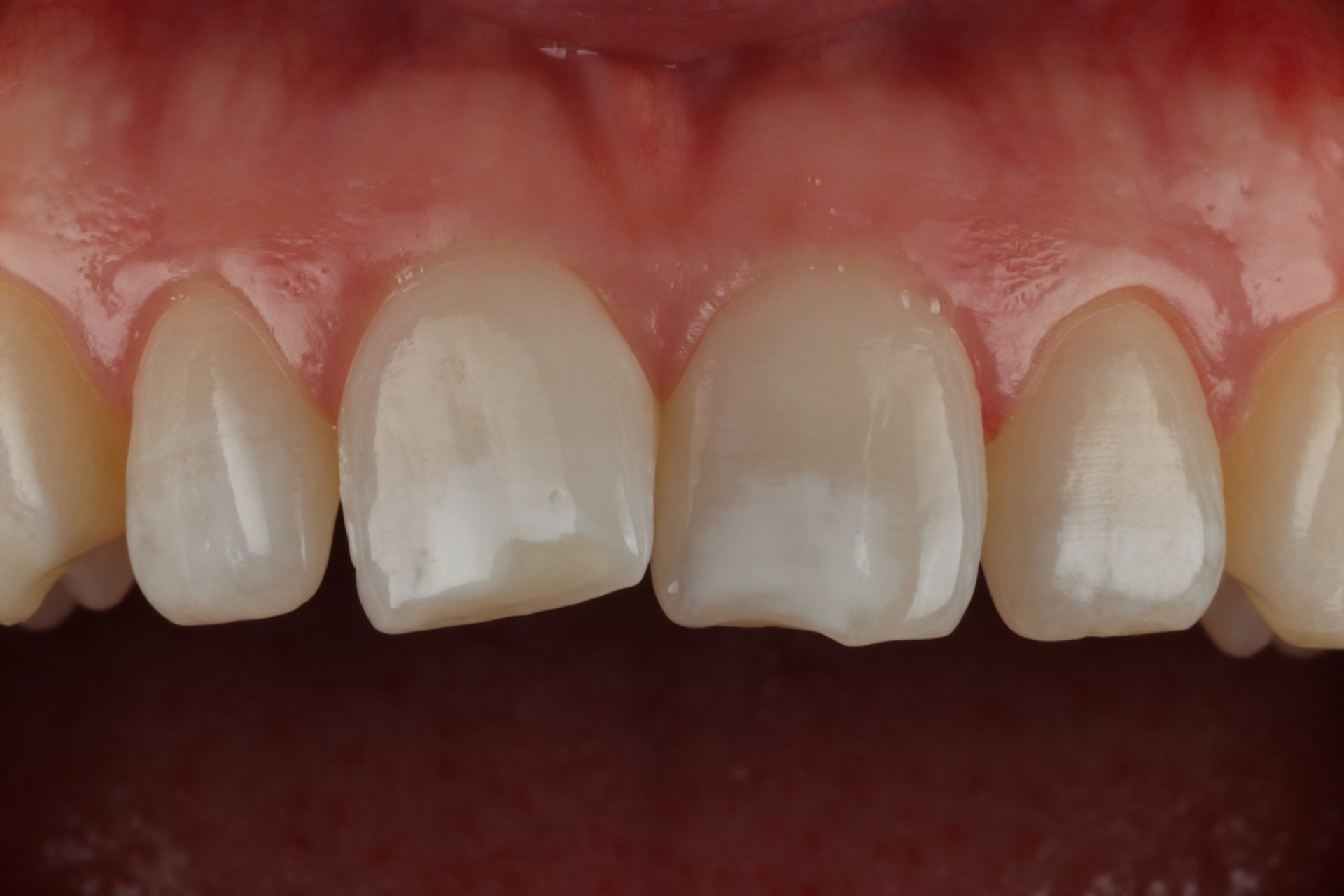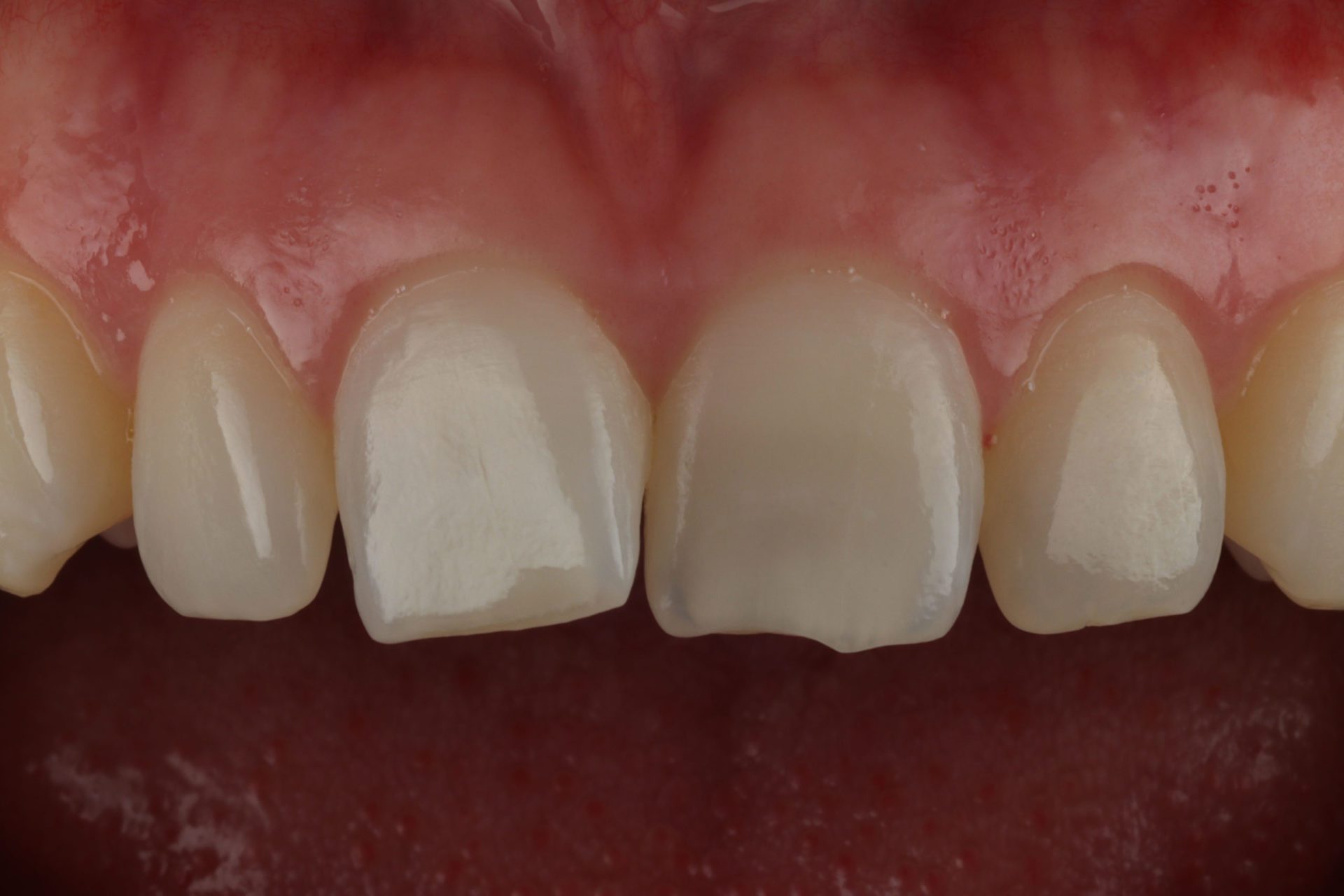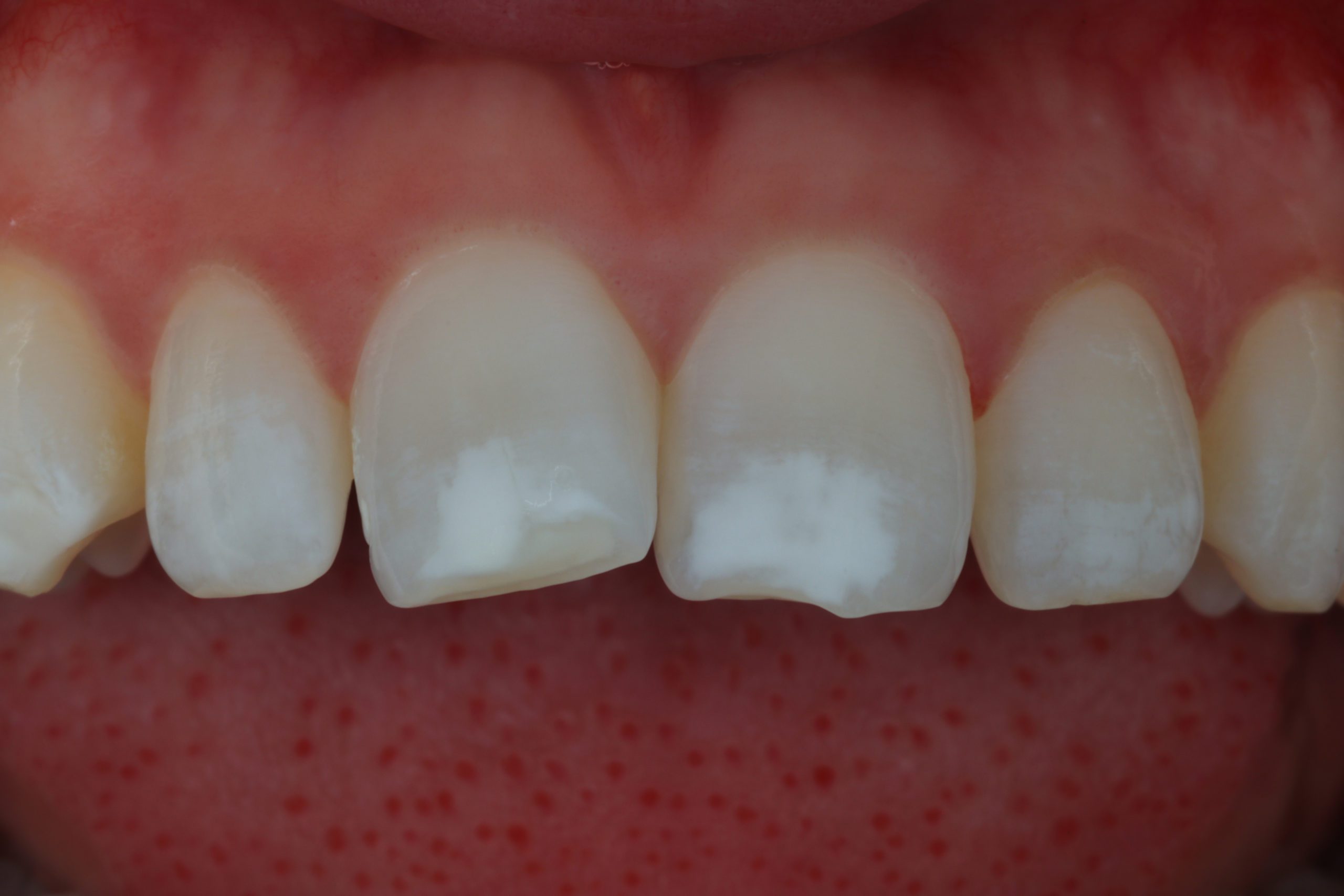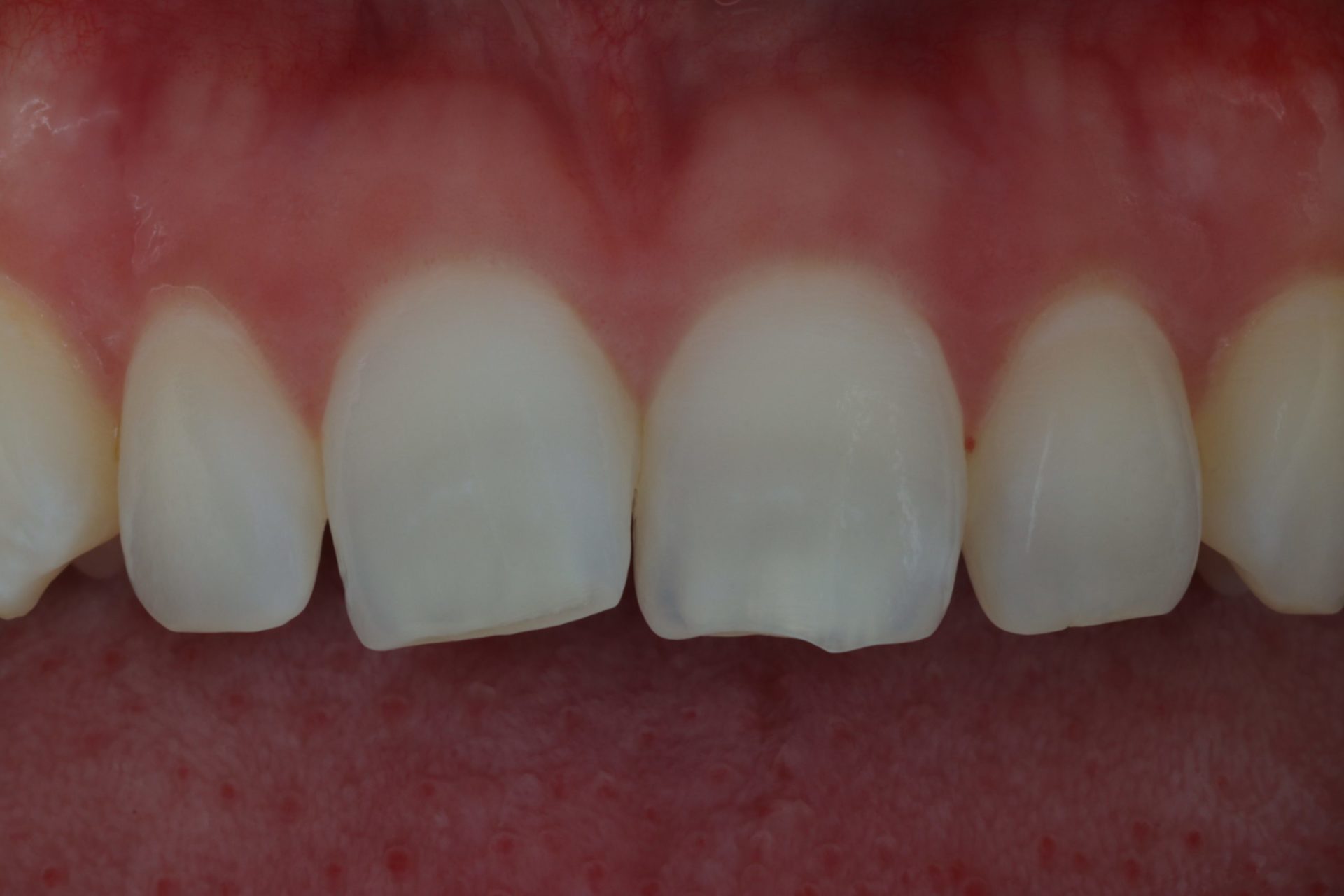White spots is a generic term to describe an unusual tooth appearance which is light in colour. There are actually several causes for them, including:
Yes. The best approach to correcting white spots is the most minimal. Your dentist will start by suggesting the most gentle technique that is appropriate for your white spots.
This is the gentlest approach as it can often be successful without any drilling of the tooth. The first step is to whiten the teeth for several weeks, followed by a visit to the dentist who will then massage a runny filling material into the tooth. This changes the way light reflects within the tooth to hide the white spot. The photos below show a case completed by Ed Coppen with resin infiltration. The use of a polarising filter allows better visualisation of the white spots so the affected areas can be treated optimally.




If you have a severe white spot and resin infiltration is unlikely to succeed, or you have completed infiltration without a satisfactory result, your dentist may suggest placing filling material instead. First they will remove the portion of affected tooth before choosing a shade of white filling material to put in it’s place.
If the whole surface of the tooth is affected then it may be more appropriate to cover it with a veneer – a thin layer of material over the whole front of the tooth. Read more on our veneer page here.